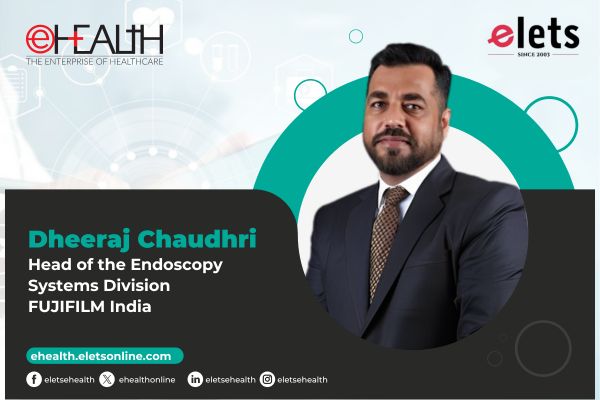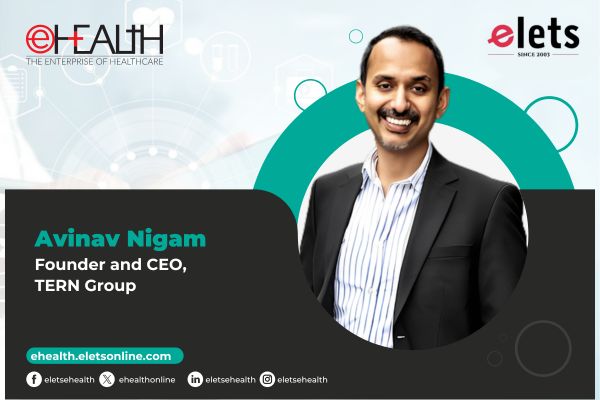
In India’s rapidly evolving healthcare landscape, precision and efficiency in surgical procedures are becoming increasingly vital, especially as demand for minimally invasive and cost-effective treatments grows. In an exclusive interview with Dr Asawari Savant, from Elets News Network (ENN), Arpit Paliwal, Director, HRS Navigation shares insights into how technologies like HRS Navigation’s image-guided surgical systems address these needs, offering real-time assistance to enhance surgical accuracy and patient outcomes. Edited excerpts
How does HRS Navigation’s technology enhance the precision and efficiency of image-guided surgeries compared to traditional methods?

At HRS Navigation, our technologies, such as the easyNav™ NeuroNavigation and Spine Navigation systems, enhance surgical precision by providing real-time image-guided assistance. Traditional methods often rely on manual techniques and a surgeon’s intuition, which can lead to variability in outcomes. Our navigation systems reduce this variability by offering precise, real-time feedback during surgery, allowing for more accurate placement of instruments and implants. This leads to improved precision, fewer complications, and a more streamlined workflow, significantly increasing surgical efficiency.

Can you share specific examples where your solutions have significantly improved patient outcomes or reduced surgery times?

With our easyNav™ Neuro Navigation system, surgeons have been able to perform complex neurosurgical procedures more efficiently, potentially reducing surgery times in cases where precise localization of critical structures is crucial. Similarly, our Spine Navigation system is instrumental in improving the accuracy of pedicle screw placement during spinal fusion surgeries, resulting in better spinal alignment and reduced postoperative complications. These advancements have directly contributed to enhanced patient outcomes and potentially faster recovery times.

What role do AI and machine learning play in your navigation systems, and how do they contribute to better surgical outcomes?
While AI and machine learning are not yet fully integrated into our current systems, we are actively researching their applications for future iterations of our navigation products. AI has the potential to analyze large datasets to assist in predicting potential surgical challenges or outcomes, while machine learning can continuously improve navigation accuracy by learning from past surgical cases. By integrating these technologies, we aim to provide surgeons with enhanced decision-making tools, contributing to more precise surgeries and better patient outcomes.
As healthcare moves towards minimally invasive procedures, how does HRS Navigation support this trend, and what innovations are you working on?
At HRS Navigation, our neuro and spine navigation systems are built to support the trend toward minimally invasive surgery (MIS). These systems allow surgeons to work through smaller incisions while maintaining the high precision required for complex procedures. By reducing the size of incisions, we help minimize patient trauma, shorten hospital stays, and promote faster recovery. We are continuously innovating in this area, with advancements in spine navigation focused on making complex spinal procedures even more efficient and less invasive for patients.
How do you see the adoption of computer-assisted surgical technologies evolving in emerging markets, where cost-efficiency and scalability are critical?
Emerging markets, such as India, have a growing demand for affordable yet high-quality medical technologies. Our navigation systems provide cost-effective solutions that meet these needs without compromising on precision or efficiency. One key feature is our autoclavable and reusable instruments, which significantly reduce long-term costs for healthcare providers by minimizing the need for expensive single-use tools. These systems are scalable across diverse healthcare settings and offer substantial value by reducing surgery times and improving outcomes. As more healthcare providers in emerging markets recognize the long-term cost savings and enhanced patient care that come with our solutions, we anticipate rapid growth in the adoption of surgical navigation technologies.
Also Read: Honouring Exemplary Healthcare Innovations at the 14th Elets Healthcare Innovation Awards 2024
What challenges do healthcare providers face when integrating surgical navigation technologies, and how does HRS Navigation help overcome them?
A major challenge for healthcare providers is the initial learning curve and technical integration of new navigation systems. At HRS Navigation, we mitigate this by offering comprehensive training and support, particularly during the early adoption phase. Our navigation systems are designed with intuitive interfaces, making them easy to integrate into clinical workflows. Additionally, we provide extensive clinical support, with a dedicated team available to assist surgeons during live surgeries, ensuring smooth transitions and minimizing disruptions.
We also offer online support with secure remote access software, enabling authorized diagnosis and troubleshooting. This ensures seamless assistance, allowing healthcare providers to address any technical challenges swiftly and effectively. By combining hands-on support with innovative remote capabilities, we help healthcare providers overcome integration challenges and fully realize the benefits of our technology.
Be a part of Elets Collaborative Initiatives. Join Us for Upcoming Events and explore business opportunities. Like us on Facebook , connect with us on LinkedIn and follow us on Twitter , Instagram.
"Exciting news! Elets technomedia is now on WhatsApp Channels Subscribe today by clicking the link and stay updated with the latest insights!" Click here!
















